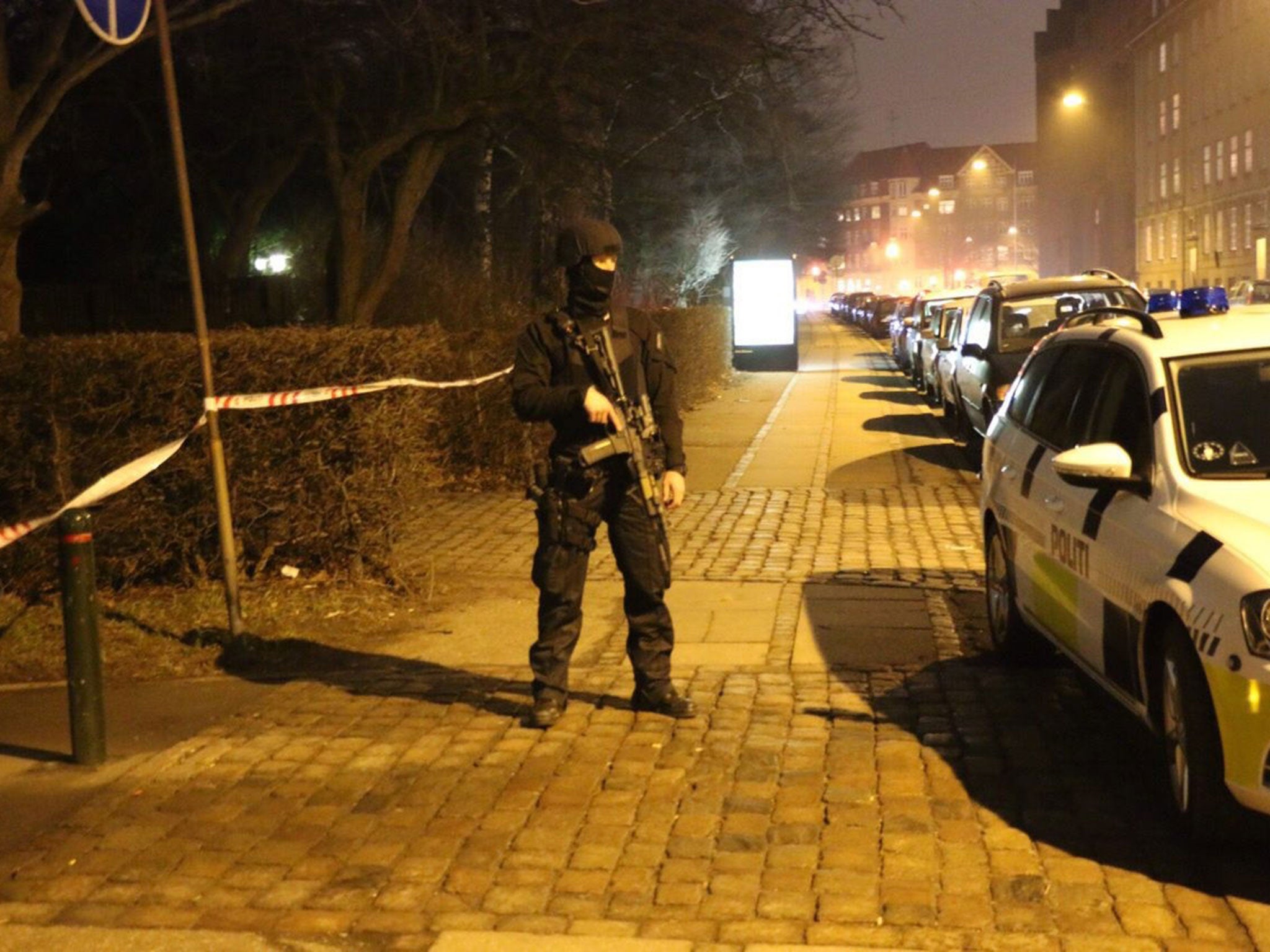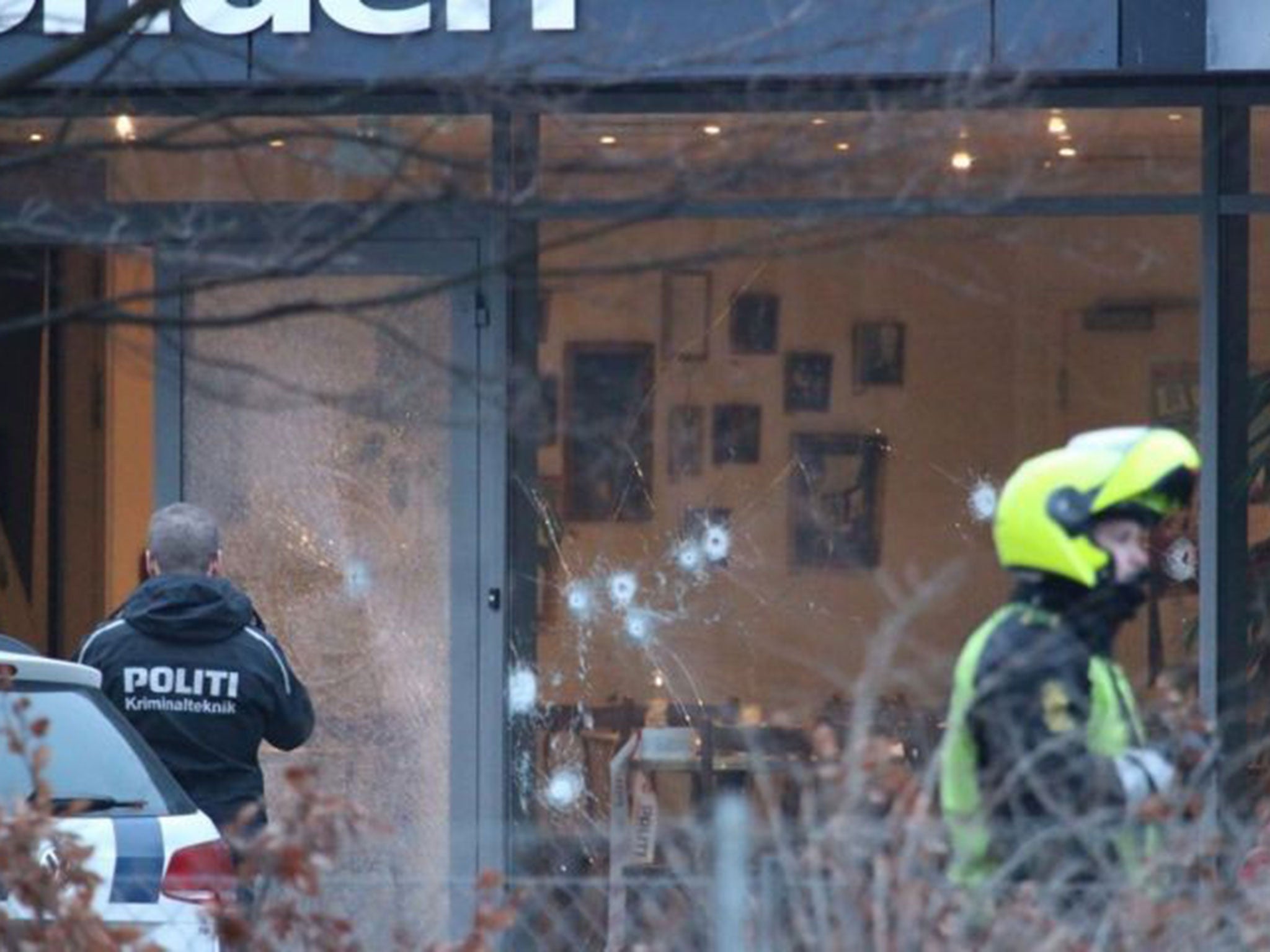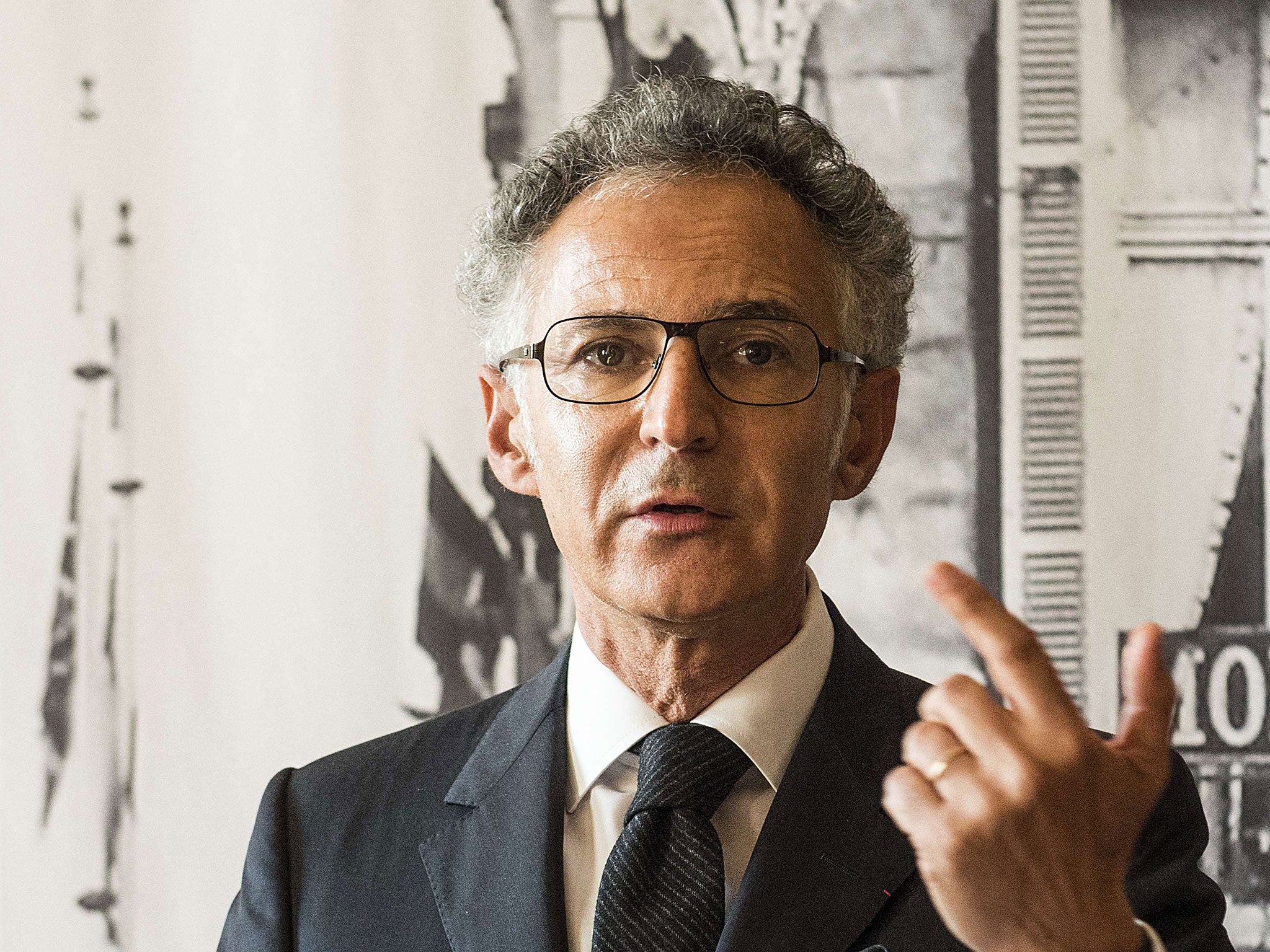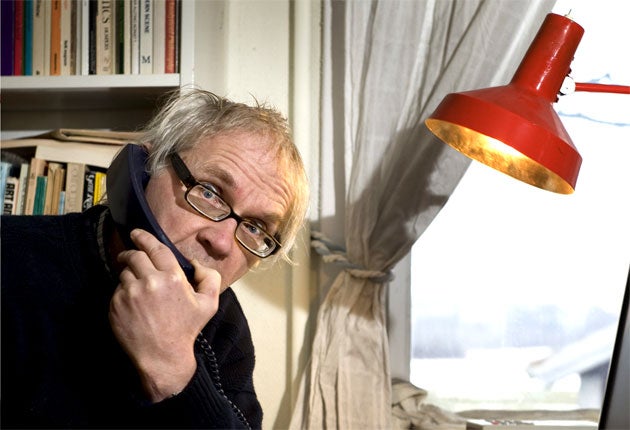Copenhagen shootings: Hunt for gunmen after two deadly attacks on a cafe and synagogue
Police said it was not immediately clear whether the two fatal attacks were linked

Denmark's capital has been rocked by two deadly shootings. In the first attack a suspected terrorist unleashed a hail of automatic gunfire into a crowded café in Copenhagen, which had cartoonist Lars Vilks in attendance, before fleeing leaving one dead.
This was quickly followed by second incident after midnight at a synagogue in the centre of the city where one man was killed and two police officers wounded before the attacker fled on foot. Police said it was not immediately clear whether the two attacks were linked.
A member of the café audience, 40, died at the scene while three police officers were injured at the Krudttonden café in Copenhagen. It was holding a seminar called “Art, blasphemy and the freedom of expression” with Mr Vilks, the Swedish artist who has been the subject of a series of death threats since drawing the Prophet Mohamed on the body of a dog in 2007. The event had been organised to mark the anniversary of the 1989 fatwa calling for the assassination of the British author Salman Rushdie.
Jorgen Skov, a Danish police spokesman, said that the gunman may have planned the “same scenario” as the massacre at the Charlie Hebdo magazine offices in Paris last month.
Witnesses said the attacker used what appeared to be automatic rifles, shooting through the windows of the café. Seven armed police and security personnel inside returned fire, stopping him from getting inside. The attacker, reportedly of Arabic appearance and speaking Danish, was said to be dressed in black and masked by a scarf. He fled the scene in a carjacked Volkswagen Polo. The car was later found abandoned. During the shooting, Mr Vilks, who had been accompanied by Swedish security officers, was ushered out of the room and hidden in a cold store. He later said that he believed he was the gunman’s main target. “What other motive could there be?” he said.
The French ambassador to Denmark, François Zimeray, who was present to discuss the Charlie Hebdo attack, wrote on Twitter moments after that he was “still alive in the room”. Police said the injuries to the three officers were not life-threatening. The hunt for the gunman has drawn in Swedish security services who were “sharing information” with their Danish counterparts, while patrols had moved up to the German border.
At the scene, Helle Thorning-Schmidt, the Danish Prime Minister, said: “We feel certain now it’s... a terrorist attack. We are in a high alarm all over the country, and our main priority at this stage is to catch the perpetrators.”

At the scene of the second incident in central Copenhagen, Sebastian Zepeda, 19, from London, said he did not want to leave his hotel room after hearing of the first shooting and was text messaging with his mother when the second shooting happened in the street below.
"I was on my bed and I heard gunshots. And my heart raced," he said. "All of a sudden the road was packed with police."
David Cameron condemned the shootings, saying free speech “must always be protected”. The French President, François Hollande, called the shooting “deplorable”.
In the 7 January attacks in Paris, 17 people were killed by three Islamist terrorists in the offices of Charlie Hebdo magazine and at a kosher supermarket.
Helle Merete Brix, one of the Copenhagen event’s organisers, told the local TV2 News that she and Vilks hid when the shooting started at about 4pm. “I was in a cold room and kept hold of Lars Vilks’s hand. He was very cool. We stood and told each other bad jokes,” she said. “His bodyguards did a tremendous job.” She said people in the café “actually reacted very calmly” and the meeting carried on afterwards because “we could not get away”.
Mr Zimeray, speaking from inside the building, said: “They fired on us from the outside. It was the same intention as Charlie Hebdo except they didn’t manage to get in. Bullets went through the doors and everyone threw themselves to the floor.”
Next to the café is a playground full of children and their parents; they ran screaming for cover. Hervé Dumuis, who works at nearby Osterbro football stadium, said: “There was somebody on the pavement and he had been shot, or her.”
Despite the bounty placed on his head by al-Qaeda, Vilks, 68, has remained defiant, saying: “If you yield to the threats… you have abandoned the democratic principle.”

Also scheduled to speak was Inna Shevchenko of the Ukrainian feminist group Femen. “I ran away with some people through the back door,” she said. “I heard about 20 shots at the entrance of the building.”
After the Charlie Hebdo shootings Vilks told Associated Press: “This will create fear among people on a whole different level. ”

Al-Qaeda’s most wanted
Listed among al-Qaeda’s “most wanted” in the West, the Swedish artist Lars Vilks is notorious for his deliberately provocative creations, including the Prophet Mohamed depicted as a stray dog. His work has made him the subject of repeated death threats from Islamic extremists. The French cartoonist Stephane Charbonnier, killed in the Charlie Hebdo attack in Paris, was on the same hit list.
Vilks has lived under police protection since 2007, when his images were published in the Swedish regional newspaper Nerikes Allehanda, sparking an international debate over the freedom to blaspheme and offend. Isis is understood to be offering a reward of up to $150,000 (£98,000) for his assassination. He sleeps with an axe under his bed and has had a panic room installed in his house.
In 2009 a plot to kill him was foiled by international police, and arrests made in Ireland and the US – including the American Colleen LaRose, who became known as “Jihad Jane”. Then, in September 2011, three men were also arrested in Gothenburg on charges of conspiring to murder Vilks.
Hannah Fearn
Join our commenting forum
Join thought-provoking conversations, follow other Independent readers and see their replies
Comments
Bookmark popover
Removed from bookmarks